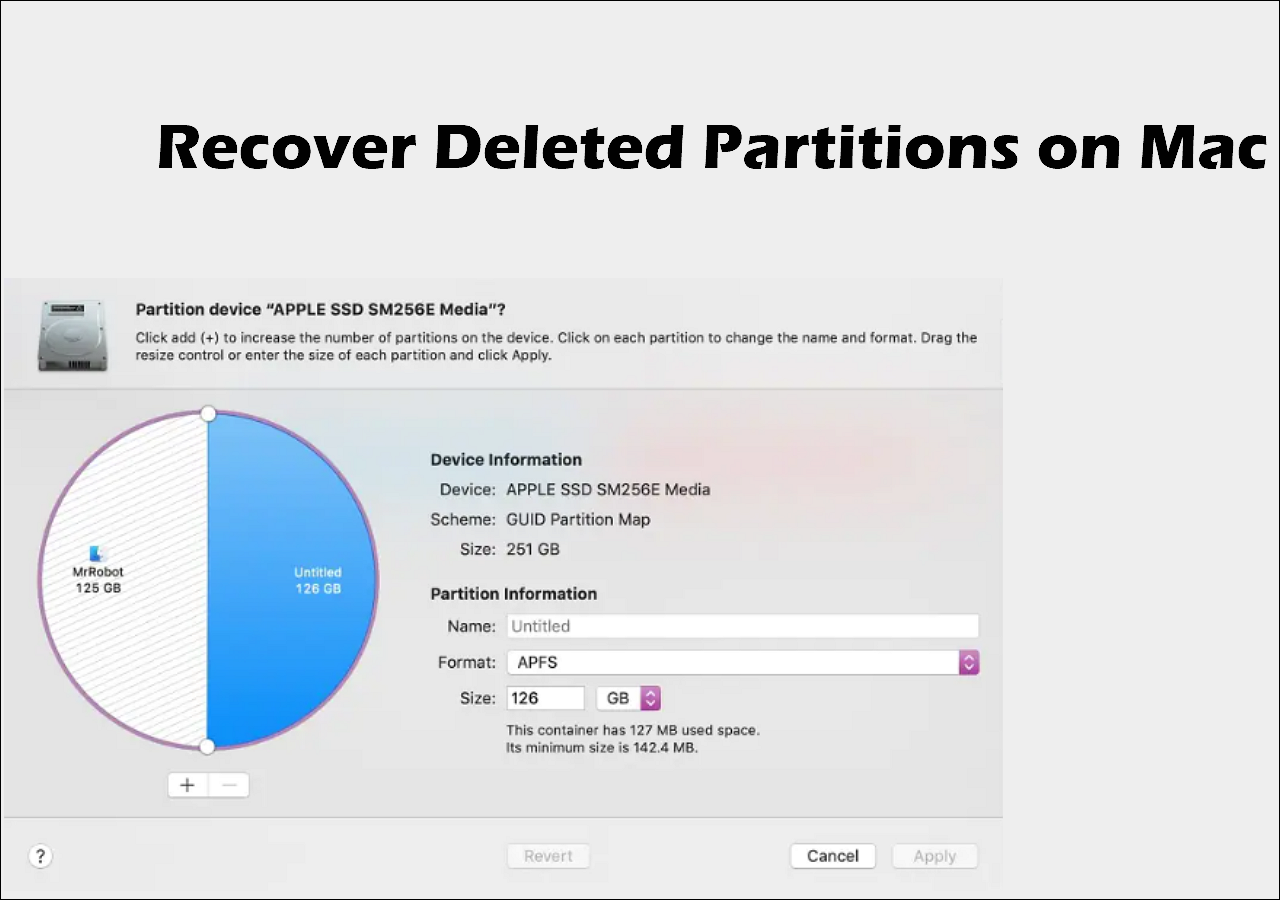
How do I recover the deleted partition on my Mac?
- 1. Download and launch EaseUS Data Recovery Wizard for Mac.
- 2. Select the deleted partition from your Mac's storage device list.
- 3. Click the "Search for lost files" button to scan for the lost data.
- 4. Preview the found files.
- 5. Click "Recover" again to have them back.
Mac Deleted Partition Recovery Overview
It can be very annoying when you encounter that partition is suddenly deleted and inaccessible caused by the following issues.
- Delete a partition accidentally when managing the hard drive.
- Lose a partition due to a partition table damaged by a virus or faulty disk operations.
- The sudden power outages make a partition inaccessible.
- The bad sectors on the partition led to an unrecognized partition.
When a partition is deleted or lost on your Mac, the macOS removes its assignment on the hard drive and allows the memory of the lost partition to be used again. So, if you keep the space of the lost partition from being overwritten, there is a great opportunity for you to recover deleted partition on Mac and get all the data back. How to recover lost data from a lost partition? Or how to restore lost/deleted partitions?
How to Recover Deleted/Lost Partitions on macOS
Under those conditions mentioned above, restoring the destroyed partitions and all the data they contain is usually possible. When complete partition recovery isn't achievable, recovering most of the most important files is still valuable. Both paid and free Mac partition recovery software alternatives are available for this.
- Solution 1: Recover with Deleted Partitions with EaseUS
- Solution 2: Recover Lost Partitions Using TestDisk
- Solution 3: Repair Corrupted Partition with Disk Utility
- Solution 4: Recover Lost Files from Time Machine
Solution 1: Recover with Deleted Partitions with EaseUS
EaseUS Data Recovery Wizard for Mac Pro comes to help you get files back without effort. It is the ultimate Mac data recovery software supporting lost partition recovery.
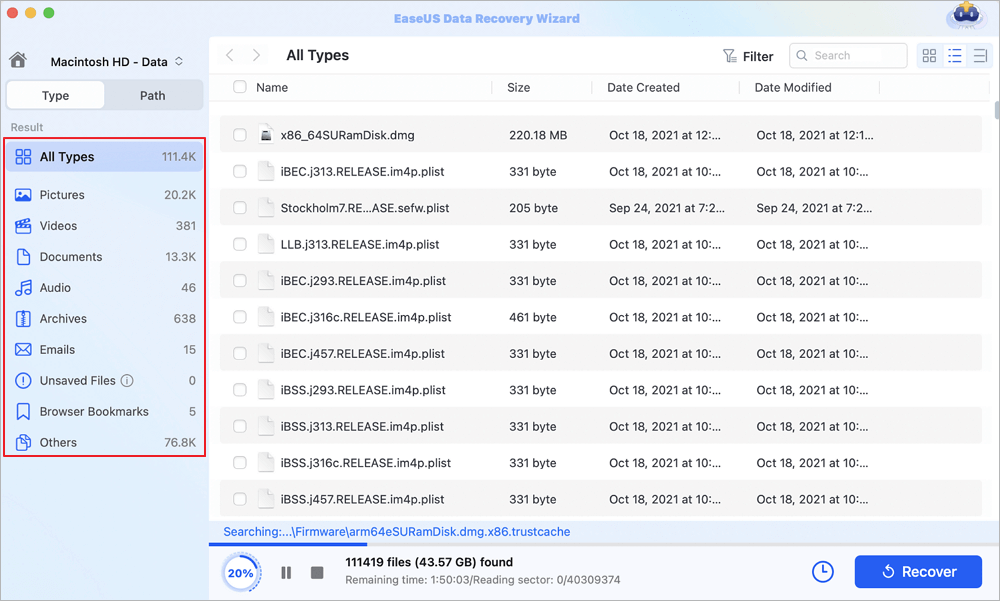
Top 8 Tools to Recover Deleted Partitions on Mac
You accidentally deleted your Mac partition and lost all the data on it. Then, you desperately want to recover your Mac partition. Read more >>
It allows you to recover deleted files on Mac from the lost partition in internal and external hard drives, USB flash drives, and memory cards on Mac. It is compatible with many versions of Mac Operating systems, including Mac OS X 10.9 to the latest macOS 14 Sonoma.
EaseUS Mac data recovery tool supports partition recovery in multiple file systems. For instance, APFS drives data recovery and HFS, HFS+, HFSX, and FAT file retrieving.
Let's see how to restore your lost or deleted partition with data on a Mac computer now:
Step 1. Select the location to scan
Launch EaseUS Data Recovery Wizard for Mac and choose the hard drive, SSD, SD card, USB flash drive, or TF card where you lost data. Click "Search for lost files" to start scanning.
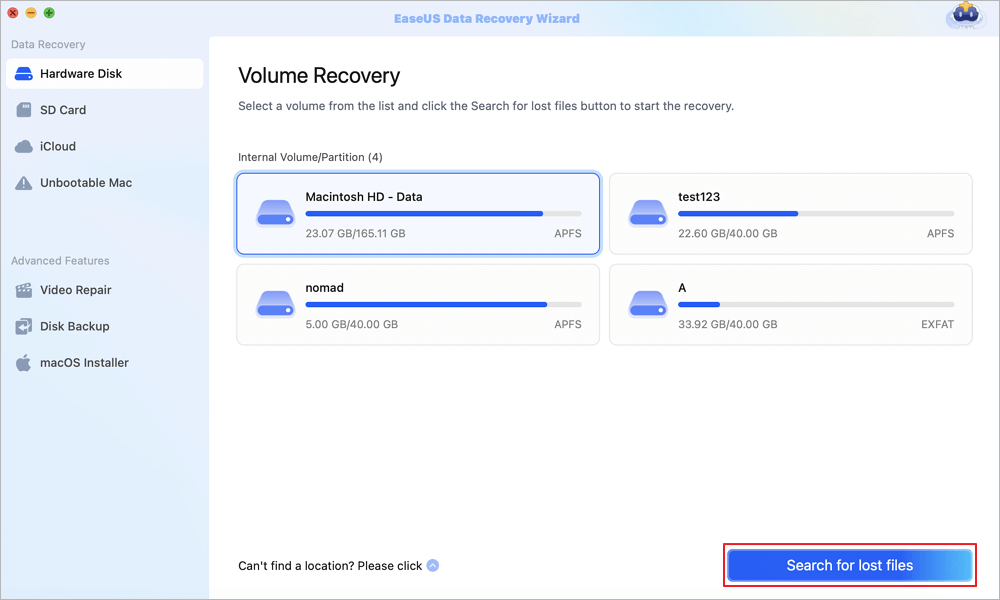
Step 2. Filter lost Mac data
The software will automatically scan for lost data on MacBook/iMac. When the scan completes, filter wanted data through the "Type" and "Path" buttons.

Step 3. Recover lost data or files
Double-click a file to preview it. Then, click the "Recover" button to restore the lost data to another place.
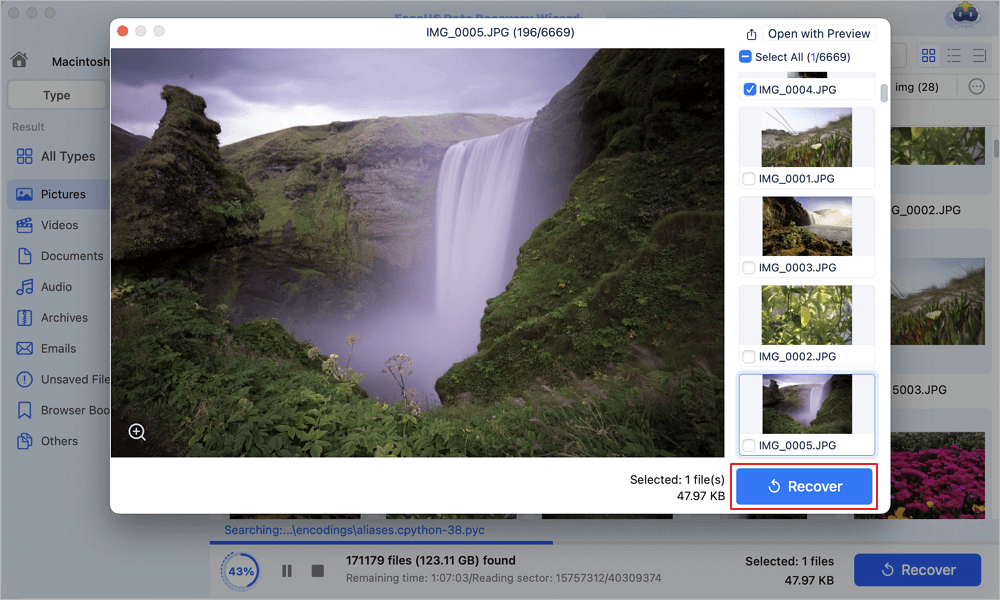
If you find this information helpful, please share it with others on social media to assist them in overcoming this common challenge.
Solution 2: Recover Lost Partitions Using TestDisk
For Mac users who wish to recover lost partitions, there's also the free data recovery tool TestDisk. It can recover deleted or lost partitions and return non-booting devices to normal operation in case of improper software effects. However, this program lacks a graphical user interface and is not as user-friendly as expected.
Follow these instructions to restore a partition with Testdisk on a Mac:
Step 1. Download TestDisk to your Mac. You can't do it until you install Homebrew, which is a software package management system. On a Mac, open Terminal and paste the following command:
/bin/bash -c "$(curl -fsSL https://raw.githubusercontent.com/Homebrew/install/HEAD/install.sh)"
Step 2. Enter your user password and hit "Return" when prompted. Copy this command, then paste it: Press Return after the Terminal shows that TestDisk has been installed. You can install TestDisk on your Mac by running brew install testdisk.
How to Fix Zsh Command Not Found Brew Error [Mac Terminal Guideline]
When programmers forget to install Brew or don't provide the path inside the page, the zsh: command not found: Brew error occurs.
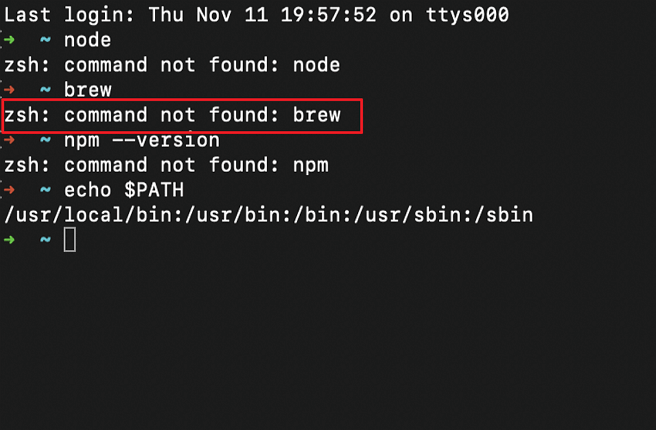
Step 3. Launch TestDisk from a terminal. To finish the action, enter this command: sudo testdisk

Step 4. You'll be given the choice of whether or not to create a new log file. Though free to choose, the first option is suggested since it will enable you to see every work the tool is doing.
Step 5. Choose the device to be scanned and the type of partition table. Next, use the Analyze function to find lost partitions and examine the current partition structure.
Step 6. After the scan is finished, you will receive a list of all recoverable partitions. Once you've found the required one, choose it and hit Return to start the Mac partition recovery process. Next, choose Write to store the partition layout.

Solution 3: Repair Corrupted Partition with Disk Utility
Not every fix calls for outside software. In reality, utilizing Apple's Disk Utility program that comes with your Mac can occasionally be enough to recover deleted partitions on Mac.
To use Disk Utility to fix a damaged partition:
Step 1. Open Disk Utility by going to Application > Utilities in Finder. You should boot into macOS Recovery mode before using Disk Utility to recover partitions on the same drive as your operating system.
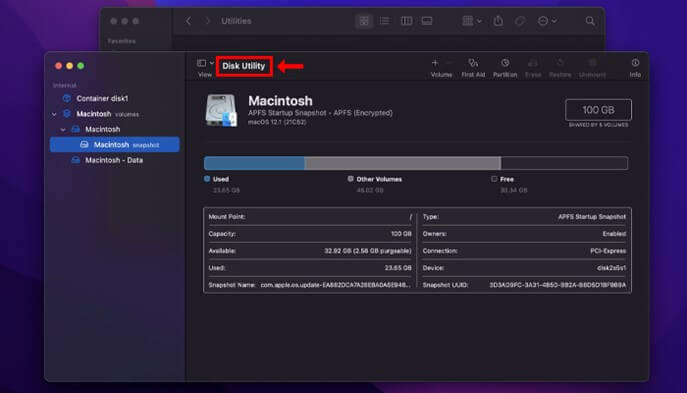
Step 2. Select the partition. After selecting the partition to evaluate, press the "First Aid" button.
Step 3. Verification. You'll see a straightforward screen requesting confirmation. After you click "Run," it will start looking for issues and, if feasible, fix them automatically.

Solution 4: Recover Lost Files from Time Machine
You can do a complete macOS restore to recover the lost files and partitions. Please be aware that accessing Recovery Mode on Macs.
To restore your macOS from Time Machine, follow these steps:
- Attach your computer to the Time Machine backup hard disk.
- Turn on your Mac again.
- Use the Command + R keys to click and hold.
- Remove the keys When you see the Apple logo on your screen. The disk utility menu will then appear.
- Click Proceed after selecting the Time Machine backup disk.
- Click Proceed after choosing a backup based on the date.
- Select your Mac's HD and select Restore.
- After completing all the instructions, restart your Mac.
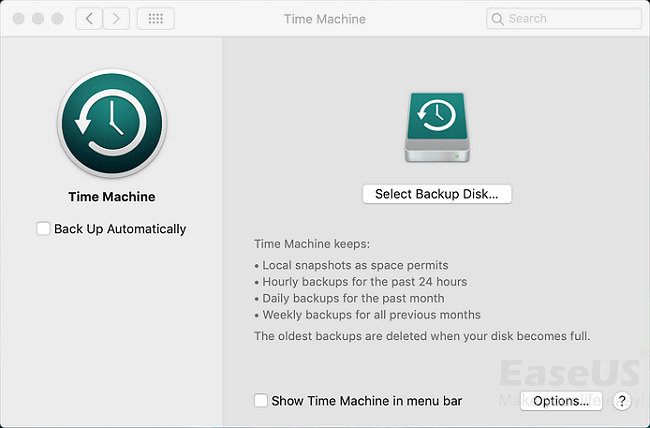
Causes for Partition Deletion on Your Mac
A partition table is produced once the disk has been partitioned, aiding the operating system in identifying the drive. The partition will be lost if the partition table, commonly known as the Master Boot Record (MBR), is destroyed or corrupted. You won't be able to write to or read from it after that.
- Certain malware or virus attacks are specifically meant to damage disk devices. Such a threat could affect your disk and result in losing files and personal data.
- Data loss may result if a mistake is made when partitioning a hard drive. Hard disk partitioning is a sensitive operation, and in an unintentional format, a whole partition can be erased in a matter of seconds.
- It's simple to make mistakes while modifying your partitions via the Terminal if you're not experienced with it.
LEARN MORE
Still curious? Click here to learn about How to Recover HFS, HFS+ Partition Data on Mac.
Conclusion
To address the problem of partition loss, selecting and utilizing user-friendly partition software is possible. To make an informed choice, be aware of the procedures required, extra advantages, and general usability. Choosing and utilizing the user-friendly partition program EaseUS Data Recovery Wizard for Mac is possible to fix the partition loss issue.
Recover Deleted Partitions on Mac FAQs
After learning how to recover deleted Mac partitions in 4 ways, you may have more questions about it. See if you can find your answers here:
1. What might lead to a Mac's partition loss?
On a Mac, incorrect formatting, the use of dubious disk cleanup tools, viruses, unauthorized drive access, and incorrect command execution can all lead to ruined disks.
2. What happens if I delete a partition Mac?
When a partition is removed, its contents are gone forever. Make sure to back up your data before you begin. Select a volume in the Disk Utility app on your Mac, and then click the Partition button in the toolbar.
3. Is it possible to recover a deleted partition?
When a disk is partitioned, a partition table is generated for it, which helps the operating system recognize the disk properly. If this table breaks or is lost, you won't be able to read from or write to this partition; in such case, the partition will also be lost. However, you can recover the lost files from the deleted partition.
4. How do I Restore a disk partition on a Mac?
This is the easiest way to enter the Terminal when logged into macOS. To see a list of all device partitions, type diskutil list into the Terminal command line (Applications - Utilities - Terminal) and hit Return.
Was This Page Helpful?
Cedric Grantham is a senior editor and data recovery specialist of EaseUS. He mainly writes articles and how-to tips about data recovery on PC and Mac. He has handled 10,000+ data recovery cases and is good at data recovery of NTFS, FAT (FAT32 and ExFAT) file systems, and RAID structure reorganization.
Daisy is the Senior editor of the writing team for EaseUS. She has been working at EaseUS for over ten years, starting as a technical writer and moving on to being a team leader of the content group. As a professional author for over ten years, she writes a lot to help people overcome their tech troubles.
-
EaseUS Data Recovery Wizard is a powerful system recovery software, designed to enable you to recover files you’ve deleted accidentally, potentially lost to malware or an entire hard drive partition.
Read More -
EaseUS Data Recovery Wizard is the best we have seen. It's far from perfect, partly because today's advanced disk technology makes data-recovery more difficult than it was with the simpler technology of the past.
Read More -
EaseUS Data Recovery Wizard Pro has a reputation as one of the best data recovery software programs on the market. It comes with a selection of advanced features, including partition recovery, formatted drive restoration, and corrupted file repair.
Read More
Related Articles
-
Recover Unsaved Word/Excel Files in Crashed Office 2016 on Mac
![author icon]() Jean/Dec 12, 2025
Jean/Dec 12, 2025 -
Fix No Macintosh HD in Disk Utility in Finder/Recovery Mode
![author icon]() Brithny/Dec 12, 2025
Brithny/Dec 12, 2025 -
How to Remove Windows from Mac | Full Guide
![author icon]() Dany/Dec 12, 2025
Dany/Dec 12, 2025 -
How to See All Files on Mac Hard Drive [Hidden Files/Folders Included]
![author icon]() Brithny/Dec 12, 2025
Brithny/Dec 12, 2025